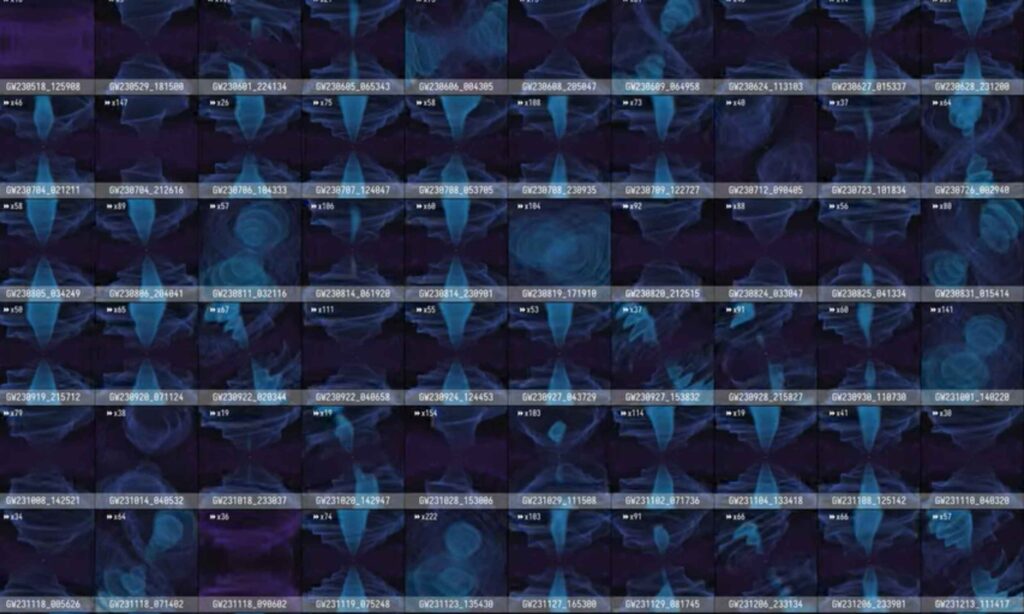
An international network of observatories has released version 4.0 of its groundbreaking catalog, listing 128 new black hole merger candidates detected during the initial phase of the fourth observing run, known as O4a. This update significantly expands the list of black hole and neutron star collisions identified by detecting gravitational waves, subtle ripples in space and time. The catalog underscores the power of gravitational wave astronomy in uncovering cosmic events that often elude traditional telescopes.
The announcement comes as a major milestone in astrophysics, offering a deeper understanding of the universe’s most enigmatic phenomena. By capturing these events, scientists can better test theories on the formation of massive celestial bodies. The growing number of detections allows researchers to discern patterns in the mass and spin of these objects, providing clues about their origins, whether in dense star clusters or as isolated pairs.
Importance of Black Hole Mergers
Leading the charge in this field is Dave Reitze of Caltech, serving as the executive director of the Laser Interferometer Gravitational-Wave Observatory (LIGO). Reitze has been instrumental in advancing the technology needed to detect fainter and more rapid signals of cosmic mergers. With each new detection, scientists gain a clearer picture of how nature constructs heavy objects, reducing uncertainties in theoretical models and transforming catalogs into profound insights about stellar life cycles.
According to Reitze,
“This observation once again demonstrates how gravitational waves are uniquely revealing the fundamental and exotic nature of black holes throughout the universe.”
His perspective highlights the transformative impact a single extreme event can have on our understanding of black hole formation.
GWTC 4.0: A Comprehensive Catalog
The GWTC 4.0 catalog is more than a mere list; it is a comprehensive resource detailing the properties of numerous confirmed detections while flagging events that require further examination. An accompanying paper provides an open dataset, including main recordings, instrument specifications, and data quality notes. It also features a user-friendly tool for scientists to explore events and verify findings independently.
Spanning a diverse range of sources, the catalog includes mergers resulting in black holes of various sizes and candidates involving a black hole merging with a neutron star. Each entry meticulously records the signal’s arrival time, strength, and the probable masses and spins, which are crucial for population studies.
Record-Breaking Detection
Among the entries, a detection from November 23, 2023, stands out as a record-breaker. This collision resulted in a black hole approximately 225 times the mass of the Sun, marking the largest confirmed through gravitational waves. The component masses challenge simple models of stellar collapse, suggesting that one of the black holes may have formed from previous mergers.
This extraordinary event will serve as a cornerstone for future studies on black hole spin and environmental influences, providing theorists with a clear target for testing growth models.
Detecting Black Hole Mergers
The detection of binary black hole mergers involves identifying a distinct pattern in frequency and time, allowing scientists to determine the masses of the merging objects and the resultant remnant. This process relies on interferometers, devices that split laser light along two perpendicular arms and measure the timing differences as the beams return. Gravitational waves cause minute changes in the arm lengths, altering the interference pattern, a phenomenon known as strain.
With improved calibration and reduced noise, the accuracy of these measurements has increased, enabling tighter inferences about the system’s mass and spin.
What Comes Next
The fourth observing run is set to continue into 2025, with ongoing data analysis expected to yield new results. The team will release updates as they pass rigorous internal checks. Meanwhile, real-time public alerts for potential candidates are issued through NASA’s General Coordinates Network, assisting telescopes in searching for any accompanying light or particle signals from these rare sources.
Each new detection enriches our understanding of massive object formation and behavior, offering insights into their size, motion, and interactions with their environment. These discoveries also serve as critical tests for the laws of gravity under extreme conditions.
As researchers delve deeper into the signals, they will be on the lookout for subtle effects that occur when light or waves pass near massive objects, potentially bending and brightening our view of the universe.
Explore the Data Yourself
The catalog’s open data is accessible to anyone interested, with tutorials available for students, educators, and hobbyists to explore key concepts. The interactive “Masses in the Stellar Graveyard” visualization allows users to compare black holes and neutron stars detected via gravitational waves with those found through electromagnetic observations.
This comparison highlights the strengths of each discovery method, with gravitational waves excelling at identifying heavy, dark pairs that do not emit light. As the catalog expands, it continues to fill in the cosmic map, detailing how stars live, collide, and ultimately meet their end.
For more engaging articles, exclusive content, and the latest updates, subscribe to our newsletter. Also, explore EarthSnap, a free app brought to you by Eric Ralls and Earth.com.





